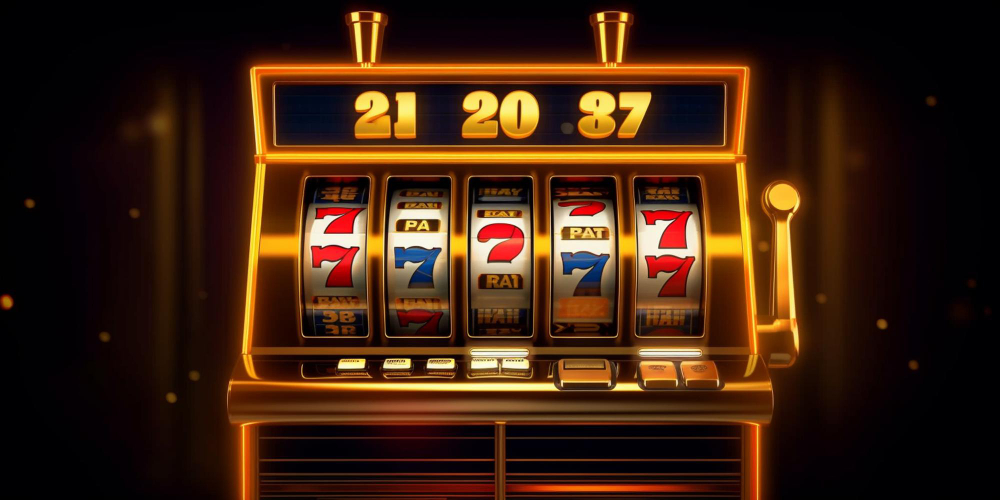Payout percentages, also known as Return to Player (RTP) rates, are a crucial metric in casino gaming that indicates the expected long-term return of wagered money to players.
These percentages vary across different games and can significantly influence a player’s potential winnings over time.
Slot machines typically offer RTPs ranging from 90% to 98%, while some table games may provide rates up to 99%.
Higher RTP percentages generally suggest more favorable odds for players, though it’s important to note that these figures represent long-term averages and do not guarantee specific outcomes in individual gaming sessions.
Calculating RTP involves complex mathematical formulas that consider the game’s rules, paytable, and probability of various outcomes.
Casino operators and game developers use these calculations to determine the house edge and ensure profitability while maintaining player interest.
Players can utilize RTP information to make informed decisions about which games to play and how to allocate their gambling budget.
However, it’s crucial to understand that RTP is a statistical measure and does not predict short-term results or guarantee wins.
Factors such as volatility, hit frequency, and maximum payout potential should also be considered alongside RTP when evaluating casino games.
These elements provide a more comprehensive understanding of a game’s risk-reward profile and can help players develop more effective strategies for managing their bankroll and expectations.
While RTP is a valuable tool for comparing games and assessing potential returns, responsible gambling practices and personal financial limits should always take precedence in decision-making processes related to casino gaming.
Key Takeaways
- Payout percentages (RTP) indicate the average amount returned to players over time, helping assess potential returns.
- Higher RTP percentages generally correlate with better long-term odds for players.
- RTP is calculated by dividing the total returned by the total wagered, multiplied by 100.
- RTP is a long-term measure, and individual gaming sessions may deviate from the average.
- Understanding RTP aids in budgeting and making informed game choices for better management of gambling expenditures.
What Are Payout Percentages?
Payout percentages, also known as return to player (RTP) rates, indicate the expected percentage of wagered money that a casino game will return to players over time.
These percentages are essential for understanding potential returns in casino games. A slot machine with a 95% RTP, for instance, is expected to return $95 for every $100 wagered on average.
RTP rates provide insight into a game’s odds. Higher RTP rates generally correlate with better odds for players.
However, this doesn’t guarantee individual wins but rather reflects long-term performance. Different games and machines have varying RTP rates, making it advisable to review these before playing.
Online casinos typically display RTP rates more prominently than physical casinos, facilitating informed decision-making. Understanding payout percentages allows players to manage expectations and develop strategies more effectively.
This information enables the selection of games with potentially higher returns, which can contribute to a more informed gaming experience.
It is important to note that while RTP rates provide useful information, they don’t predict short-term outcomes or guarantee wins. Players should approach gambling responsibly, considering RTP as one of many factors in their decision-making process.
How RTP Is Calculated
RTP (Return to Player) calculation provides essential information for evaluating casino game performance. The formula for RTP involves dividing the total amount returned to players by the total amount wagered, then multiplying by 100 to derive a percentage.
A practical example illustrates this concept: if players wager $1,000,000 on a slot machine and receive $950,000 in returns, the RTP would be 95%.
This indicates that, on average, the game returns 95% of wagered funds to players. It’s crucial to note that RTP is a long-term statistical measure, and individual experiences may deviate significantly from this average.
Game developers and casinos employ complex algorithms and extensive simulations to determine accurate RTP figures.
These calculations typically involve running numerous game rounds to ensure statistical validity. The resulting RTP percentage offers insight into the expected long-term performance of a game.
Understanding RTP can aid in making informed decisions when selecting casino games. Games with higher RTP percentages theoretically offer better long-term returns to players.
However, it’s important to consider that RTP doesn’t guarantee specific outcomes in individual gaming sessions.
While RTP is a valuable metricNECT, it should be considered alongside other factors such as game volatility, betting limits, and personal preferences when evaluating casino games.
Additionally, regulatory bodies often require casinos to disclose RTP information, promoting transparency in the gambling industry.
Importance of RTP
Return to Player (RTP) is a significant metric in casino gaming, particularly for slot machines and other games of chance.
It represents the percentage of wagered money that a game is programmed to return to players over time. For example, a game with a 96% RTP is designed to return $96 for every $100 wagered, on average.
RTP serves several important functions:
-
Decision-making tool: Players can use RTP to compare different games and make informed choices about which ones to play. Games with higher RTPs generally offer better long-term odds for players.
-
Bankroll management: Understanding RTP can help players estimate potential losses and plan their gambling budget accordingly.
-
Transparency: Casinos use RTP as a means of demonstrating fairness and building trust with players. It provides a standardized way to evaluate and compare different games.
-
Regulatory compliance: Many jurisdictions require casinos to disclose RTP information, making it an important aspect of industry regulation.
It’s important to note that RTP is a long-term statistical average and doesn’t guarantee specific outcomes for individual playing sessions.
Short-term results can vary significantly due to the random nature of casino games.
While RTP is a useful metric, it should be considered alongside other factors such as volatility, maximum payout potential, and personal preferences when choosing casino games.
Additionally, responsible gambling practices, including setting limits and understanding the risks involved, remain crucial regardless of a game’s RTP.
RTP in Different Games
RTP (Return to Player) percentages vary across different casino games, providing insight into potential long-term returns.
Slot machines typically feature RTPs between 90% and 98%, with the specific percentage depending on the game’s design and casino policies. A slot with a 95% RTP theoretically returns $95 for every $100 wagered over an extended period.
Table games generally offer higher RTPs.
Blackjack, when played with optimal strategy, can achieve an RTP of approximately 99%, making it a preferred choice for players seeking to maximize their winning potential.
Roulette’s RTP differs between variants: American roulette has an RTP of 94.74%, while European roulette offers 97.3%. This discrepancy is attributed to the additional double zero in the American version, which increases the house edge.
Video poker is known for high RTPs, potentially reaching 99.5% with perfect play.
Understanding the RTP of various games allows players to make informed decisions about their betting choices, potentially optimizing their returns over time.
It is important to note that RTP represents a theoretical, long-term average and doesn’t guarantee specific outcomes in individual gaming sessions.
Actual results can deviate significantly from the RTP in the short term due to the inherent randomness of casino games.
Maximizing Your Winnings
Effective strategies for maximizing casino winnings involve careful game selection and bankroll management.
Games with higher Return to Player (RTP) percentages statistically offer better long-term outcomes for players. Slot machines with RTPs of 96% or higher and table games like blackjack, which can have RTPs exceeding 99%, are generally more favorable options.
Prudent bankroll management is crucial for extending playing time and increasing the probability of achieving significant wins.
Setting and adhering to a predetermined budget helps maintain control over gambling expenditures. Adjusting bet sizes in proportion to the available bankroll can prevent premature depletion of funds.
Casino promotions and bonuses can be utilized to extend playing time without additional personal investment. These offers often include free spins or matched deposits, which can increase the overall value of a player’s initial investment.
For games that involve an element of skill, such as poker or blackjack, developing proficiency can improve winning potential.
Practicing with free versions of these games allows for strategy refinement without financial risk. Implementing well-researched strategies in skill-based games can lead to more favorable outcomes when playing with real money.
It is important to note that while these strategies may enhance the playing experience and potentially improve outcomes, gambling inherently involves risk, and consistent long-term profits aren’t guaranteed.
Common Misconceptions
Misconceptions about casino gaming can lead to suboptimal decisions and unrealistic expectations.
A prevalent misunderstanding is the belief that a higher payout percentage guarantees more frequent wins. In reality, payout percentages are calculated over extensive periods, typically involving millions of spins or hands, rather than individual gaming sessions.
These percentages represent the long-term return to player (RTP) and don’t indicate the likelihood of winning during a specific session.
Another common misconception is the notion that slot machines are “due” for a win after a series of losses.
This belief is unfounded, as each spin is an independent event governed by Random Number Generator (RNG) technology.
The probability of winning remains constant regardless of previous outcomes.
Some players erroneously believe that increasing their bet size improves their odds of winning.
While larger bets can result in higher individual payouts when successful, they don’t alter the game’s underlying odds or payout percentage.
The idea that certain times of day or specific machines are more likely to pay out is another unsupported belief.
These superstitions have no basis in the actual mechanics of casino games.
Machine performance is determined by programmed algorithms and RNG technology, not by external factors such as time or location.
Understanding these misconceptions is crucial for developing realistic expectations and making informed decisions while gaming.
Conclusion
You’ve got the knowledge now—use RTP to your advantage! By understanding payout percentages, you can make smarter choices and stretch your bankroll further. Remember, higher RTP means better odds, so always check those numbers before playing. Apply this insight across different games to maximize your winnings and minimize losses. Don’t fall for common misconceptions; stick to the facts, and you’ll enjoy a more rewarding casino experience. Play smart, and let RTP guide your strategy!


